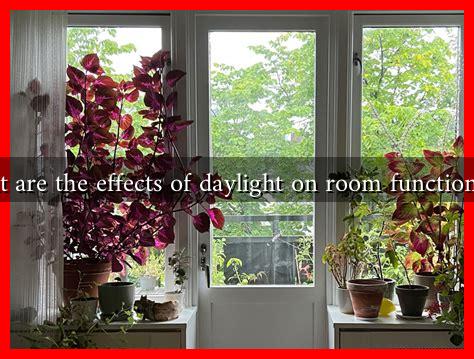-
Table of Contents
The Effects of Daylight on Room Functionality
Daylight plays a crucial role in shaping the functionality of indoor spaces. From enhancing mood and productivity to influencing energy consumption, the presence of natural light can significantly impact how we interact with our environments. This article explores the multifaceted effects of daylight on room functionality, supported by research, case studies, and practical examples.
The Psychological Impact of Daylight
Natural light has a profound effect on our psychological well-being. Studies have shown that exposure to daylight can improve mood, reduce stress, and enhance overall mental health. Here are some key points regarding the psychological benefits of daylight:
- Improved Mood: Natural light increases serotonin levels, which can help alleviate feelings of depression and anxiety.
- Enhanced Productivity: A study by the University of Alberta found that employees working in environments with ample daylight reported higher levels of productivity and job satisfaction.
- Better Sleep Patterns: Exposure to natural light during the day helps regulate circadian rhythms, leading to improved sleep quality at night.
Daylight and Energy Efficiency
Incorporating daylight into room design can lead to significant energy savings. By maximizing natural light, buildings can reduce their reliance on artificial lighting, which in turn lowers energy consumption. Consider the following:
- Reduced Lighting Costs: According to the U.S. Department of Energy, daylighting can reduce lighting energy use by 50% or more.
- Lower HVAC Costs: Natural light can help regulate indoor temperatures, reducing the need for heating and cooling systems.
- Increased Property Value: Buildings designed with effective daylighting strategies often have higher market values due to their energy efficiency and appeal.
Designing for Daylight: Best Practices
To harness the benefits of daylight, architects and designers must consider various factors when planning indoor spaces. Here are some best practices for designing rooms that maximize natural light:
- Window Placement: Strategically placing windows to capture sunlight at different times of the day can enhance daylight penetration.
- Use of Reflective Surfaces: Incorporating mirrors and light-colored walls can help distribute natural light throughout a room.
- Skylights and Light Tubes: These features can bring daylight into areas that may not have direct access to windows, such as hallways or interior rooms.
Case Studies: Successful Daylighting Projects
Several notable projects have successfully integrated daylighting into their designs, showcasing the benefits of natural light:
- The Bullitt Center, Seattle: This building is often referred to as the “greenest commercial building in the world.” It features extensive daylighting strategies, including large windows and skylights, resulting in a 75% reduction in energy use compared to conventional buildings.
- The Edge, Amsterdam: Known for its innovative design, The Edge utilizes a combination of natural light and smart technology to create a workspace that enhances employee well-being and productivity.
Conclusion: The Transformative Power of Daylight
In conclusion, the effects of daylight on room functionality are profound and far-reaching. From enhancing psychological well-being to improving energy efficiency, the benefits of natural light are undeniable. By adopting best practices in design and learning from successful case studies, we can create spaces that not only function better but also promote a healthier and more productive lifestyle. As we continue to explore the relationship between daylight and indoor environments, it becomes increasingly clear that harnessing natural light is essential for creating spaces that truly serve their occupants.
For further reading on the importance of daylight in architecture, you can visit NAIOP’s article on daylighting design strategies.

